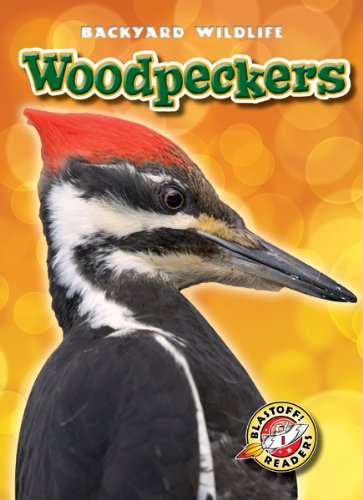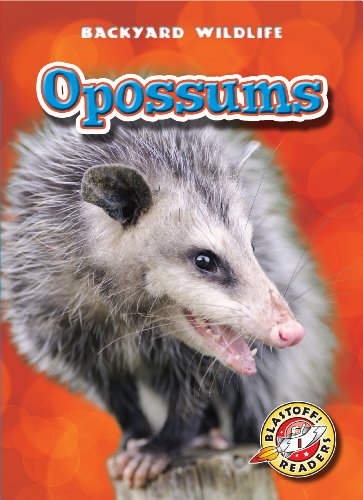-
Earth Movers
M. T. Martin
Library Binding (Bellwether Media, Aug. 1, 2006)These huge trucks move, carry, and dump big loads of earth. There are different kinds of earth movers and each has a specific task. Kids will get a first look at the types of earth movers and how they do their jobs. J
J
-
Woodpeckers
Kari Schuetz
Library Binding (Bellwether Media, Aug. 1, 2011)Using their beaks, woodpeckers peck holes in trees to get at the insects inside. They also hammer to attract mates and declare their territory. This book will interest children as it presents the behaviors and physical features of these noisy birds. I
I
-
Wolves
Emily K. Green
Library Binding (Bellwether Media, Jan. 1, 2011)Wolves are territorial animals. They mark the areas where they live and hunt with their scent. Most of these wild, howling dogs stay in groups called packs. Information about the dynamics within a wolf pack will interest young readers. G
G
-
Salamanders
Megan Borgert-Spaniol
Library Binding (Bellwether Media, Jan. 2, 2012)It seems the most overlooked creatures tend to have tricks up their sleeves or in this case, tails. Threaten a salamander and it might steal away, leaving one extremity behind. Kids will delight in this means of survival, and learn how this amphibian behaves in the wild. H
H
-
Chipmunks
Derek Zobel
Library Binding (Bellwether Media, Aug. 8, 2010)Small and quick, chipmunks make their homes in burrows, trees, nests, and logs. In some countries, they are sold as pets! Eager readers will find out the physical characteristics of chipmunks and what makes up their diverse diet. G
G
-
Opossums
Emily K. Green
Library Binding (Bellwether Media, Jan. 1, 2011)When a predator is near, an opossum will likely do one of two things. It will try to scare the predator away by showing its sharp teeth, or it will lie very still and pretend it's dead! In this book, beginning readers will discover how these marsupials escape predators and carry their young babies in pouches. K
K
-
Gorillas
Derek Zobel
Library Binding (Bellwether Media, Aug. 1, 2011)The way a gorilla moves is called knuckle-walking. This is because the animal puts pressure on its knuckles when it moves. Beginning readers will learn how gorillas walk, why they beat their chests, and more in this informative title. J
J
-
Monster Trucks
Kay Manolis
Library Binding (Bellwether Media, Feb. 1, 2008)A monster truck rolls over a car and crunches it under its huge wheels. Monster trucks are giant pickup trucks that can race around a track. Kids will roar with excitement as monster trucks dominate this book's pages. I
I
-
Groundhogs
Kari Schuetz
Library Binding (Blastoff Reader, Jan. 1, 2014)Groundhogs are big rodents--the largest in the squirrel family, in fact. They spend summers eating grasses, plants, and fruits before hibernating during the winters in underground burrows. Early readers will enjoy learning about this animal and its relation to Groundhog Day! I
I
-
Snakes
Emily Green
Library Binding (Bellwether Media, Aug. 8, 2010)Snakes come in a variety of shapes and sizes. Some are only a few feet long, while others can stretch over 40 feet long! This title introduces young readers to the traits of snakes, what and how they eat, and where they make their homes. P
P

